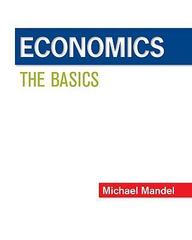D Question 21 1.5 pts What is the study of who bears the burden of taxes is central to evaluating tax equity? Q Tax measure 0 Policymaking 0 Tax allocation 0 Tax incidence D Question 22 1.5 pts tax refers to tax that is the same amount for every person, regardless of earnings or any actions that the person might take. Q Average 0 Marginal Q Equitable O Lumpsum D Question 23 1.5 pts People who drive the most also pay the most toward maintaining roads. What principle of taxation is governing? Abilitytopay principle 0 Benets principle Q None of choses are correct D Question 25 1.5 pts How is productivity determined? What are the factors of production? C] Technical knowledge C] Natural resources C] Human capital C] Physical capital D Question 26 1.5 pts Lower GDP per person indicates a higher standard of living. True FalseD Question 27 1.5 pts Financial intermediaries are the institutions through which savers can directly provide funds to borrowers. D Question 28 1.5 pts Minimum wage causes unemployment because there is a Q Equilibrium Q Surplus Q Shortage D Question 29 1.5 pts What are characteristics of a bond? C] Credit Risk E] Tax Treatment C] Term C] Opportunity D Question 30 1.5 pts A trade restriction decreases net exports and decrease the demand for dollars in the market for foreign- currency exchange. D Question 31 1.5 pts The amount of money the banking system generates with each dollar of reserves is higher than actual / initial amount of money in the economy. D Question 32 1.5 pts What is the term used to describe the fraction of deposits that banks hold as reserves Q Fiat Money Q Fractional-reserve Q Bank savings Q Reserve Ratio Market Supply and Demand Curves for a Product If the supply curve moves from $1 to $2 on the graph above, there has 0 An increase in supply Q A decrease in quantity supplied 0 A decrease in supply 0 An increase in quantity supplied Market Supply and Demand Curves for a Product What would cause a shift in the equilibrium price and quantity from point Z to point X? Market Supply and Demand Curves for a Product If the market equilibrium was at point Y but the price of the product was set at P1, then there would be a Q Shortage of (Q3-Q1) Q Shortage of (Q2-Q1) O Surplus of (Q1-Q2) O Surplus of (Q3-Q1) D Question 36 Ppts Basic Demand and Supply analysis Show what happens in the short- run (within 1 year) when the following event occurs relative to a market for a normal good. Event: Tax on production. U Demand increases, while supply remains the same, so price increases and quantity increases. 0 Supply decreases, while demand remains the same. Price increases, and quantity decreases. 0 Demand decreases, while supply remains the same, so price decreases and quantity decreases. O No change in demand and supplY- U Supply increase, while demand remains the same. Price decreases, but quantity increases. |_) Question 37 \"l Basic Demand and Supply analysis Show what happens in the short- run (within 1 year) when the following event occurs relative to a market for a normal good. Event: Number of consumers/buyers rises. U Supply decreases, while demand remains the same. Price increases, and quantity decreases. U Supply increase, while demand remains the same. Price decreases, but quantity increases. U Demand increases, while supply remains the same, so price increases and quantity increases. U Demand decreases, while supply remains the same, so price decreases and quantity decreases. U No change in demand and supply. I_/ quesuon J6 V's Basic Demand and Supply analysis Show what happens in the short- run (within 1 year) when the following event occurs relative to a market for a normal good. Event: yers expect higlprices. Q Demand decreases, while supply remains the same, so price decreases and quantity decreases. Q No change in demand and supply. Q Supply decreases, while demand remains the same. Price increases, and quantity decreases. Q Supply increase, while demand remains the same. Price decreases, but quantity increases. Q Demand increases, while supply remains the same, so price increases and quantity increases. D Question 39 3 pts Refer to the table below: What would be the average total cost if 2 units are produced? Q 110 0 None of these Q 200 Q 150 Q 125
























